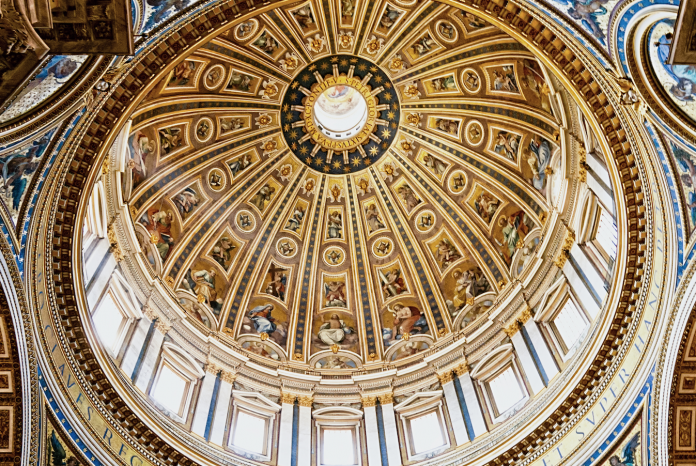
By Joe Paprocki
Overcoming the tendency toward a “beige Catholicism”
One of my favorite ideas to borrow from Bishop Robert Barron, is his notion of battling what he calls “beige Catholicism.” Bishop Barron rightly asserts that there is a tendency among Catholics to want to blend in and conform in society and play down our differences with others. This is all part of a trend that is especially prevalent among Millennials that blame religious differences for most of the world’s problems. They sometimes see the solution as the playing down of those differences in favor of a “we all worship the same God anyway” philosophy. For Catholics, the result is too often a “beige Catholicism” — a bland identity that allows Catholics to simply blend in.
The solution is not to play down our differences but to fully understand them so we can talk civilly with others about those differences. Catholicism is ultimately a unique way of seeing — a spirituality. This Catholic way of seeing can be characterized by five distinct qualities that shape the way we see all of reality and thus shape the way we live, move, and have our being. They are:
- A sense of sacramentality: We rely on signs and symbols to express what words alone are incapable of expressing. We have a “language of mystery” that includes sacramental objects (medals, scapulars, rosaries, etc.) and sacramental actions (blessing ourselves, lighting candles for others, praying novenas, etc.)
- A commitment to community: We are not just a loosely affiliated band of like-minded people; we are part of the Mystical Body of Christ. Our bond of community is so strong that even death does not separate us from one another (the Communion of Saints), and we drink from the same cup as family members when invited to receive Holy Communion under both species.
- A respect for the dignity of human life and a commitment to justice: We are not merely called to avoid evil; we have a responsibility to do good. The corporal works of mercy are at the heart of the Catholic life, and working for charity and justice is our calling.
- A reverence for Scripture and Tradition: We have a heritage that teaches us. We draw not only from Scripture but also from the teachings of our Magisterium and the lives of the saints. We are formed by going on pilgrimages, and we have traditional prayers that we hand on like family heirlooms.
- A disposition to faith and hope, not despair: We have a disposition that expects to find God at every turn and, as a result, we are called to be filled with gratitude and to be people who bring hope and mercy to others who are facing despair. To maintain and nurture this disposition, we sing hymns, practice the spiritual works of mercy, and go on retreats.
Without these five adjustments to our vision, we simply see the way the world sees. Yet Jesus taught us to see with a new set of eyes. Thankfully, over the past 2,000 years, Catholics have developed a rich treasury of practices that enable us to put on the eyes of Christ each and every day of our lives. These practices, which flow specifically from the five characteristics outlined above, can be integrated into our everyday lives where they enable us not to withdraw from the world or to blend in with it, but to robustly engage the world in a life-giving way.
If being a Catholic doesn’t make a bit of difference in our everyday lives, why bother? This year, in this column, I will focus on specific ways that we catechists can instill a robust Catholic identity in those we teach. As we gradually help young people to integrate these practices into their lives, we will be helping their lives to take on new meaning. Gradually, they will learn to see differently and, as a result, they will live and act differently.
As we form young people in faith, let’s not settle for a “beige Catholicism” when we have such a rich palate of colors to choose from!
Joe Paprocki, DMin, is the National Consultant for Faith Formation for Loyola Press.
This article was originally published in Catechist magazine, September 2016, and has been modified to fit this format.
Image Credit: YACOBCHUK / ISTOCK.COM /Thinkstock Photos 127005788




